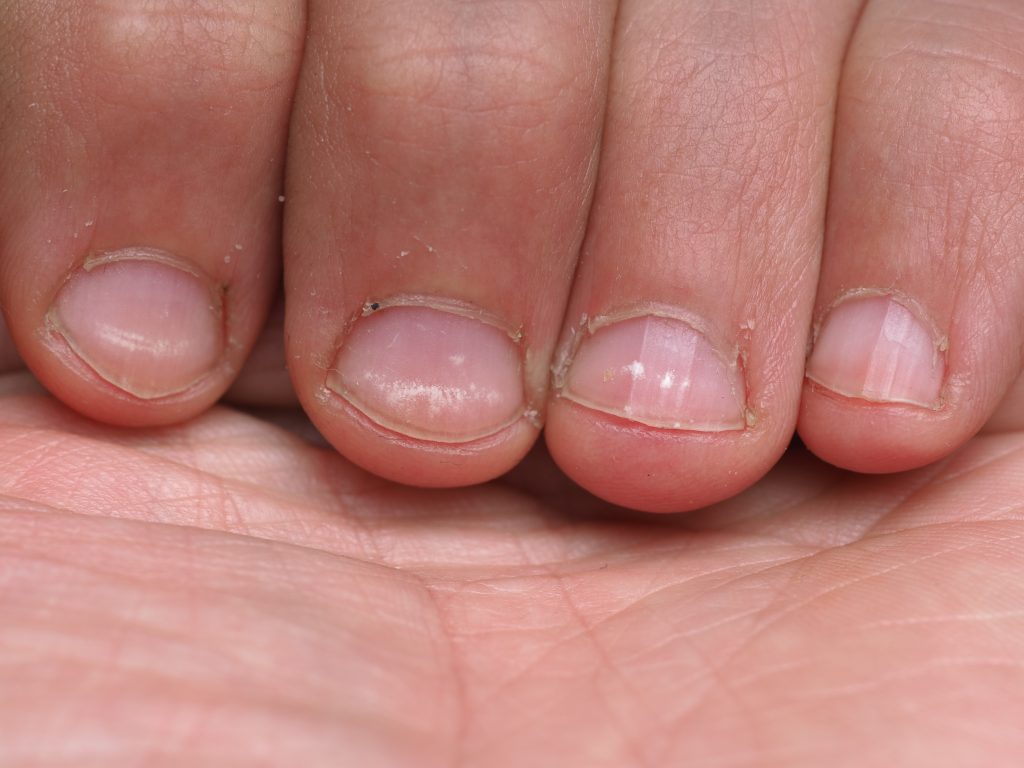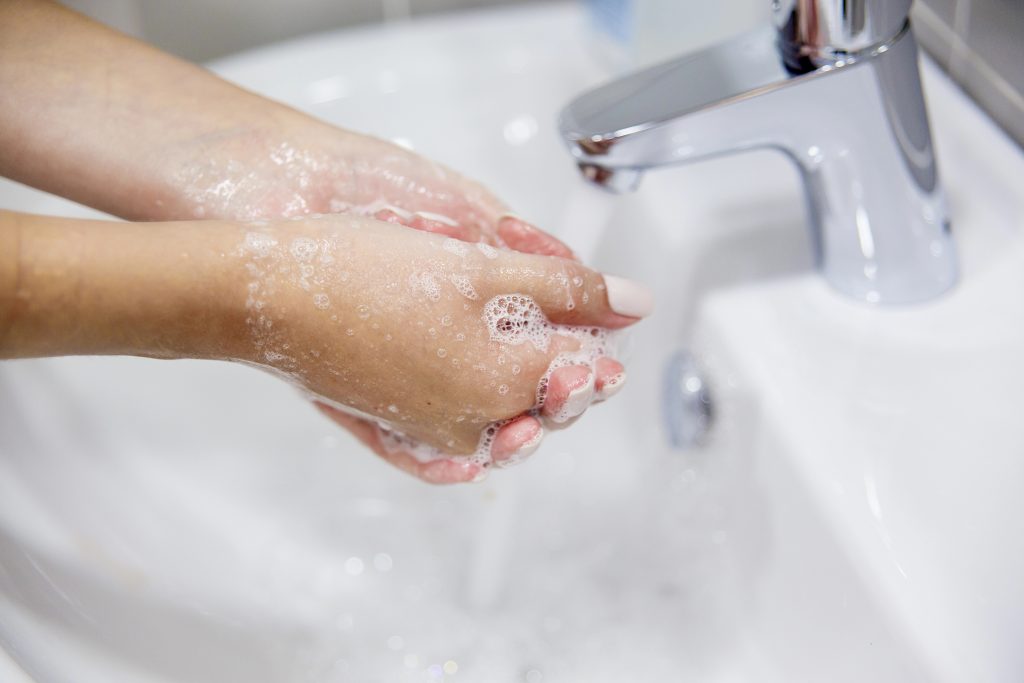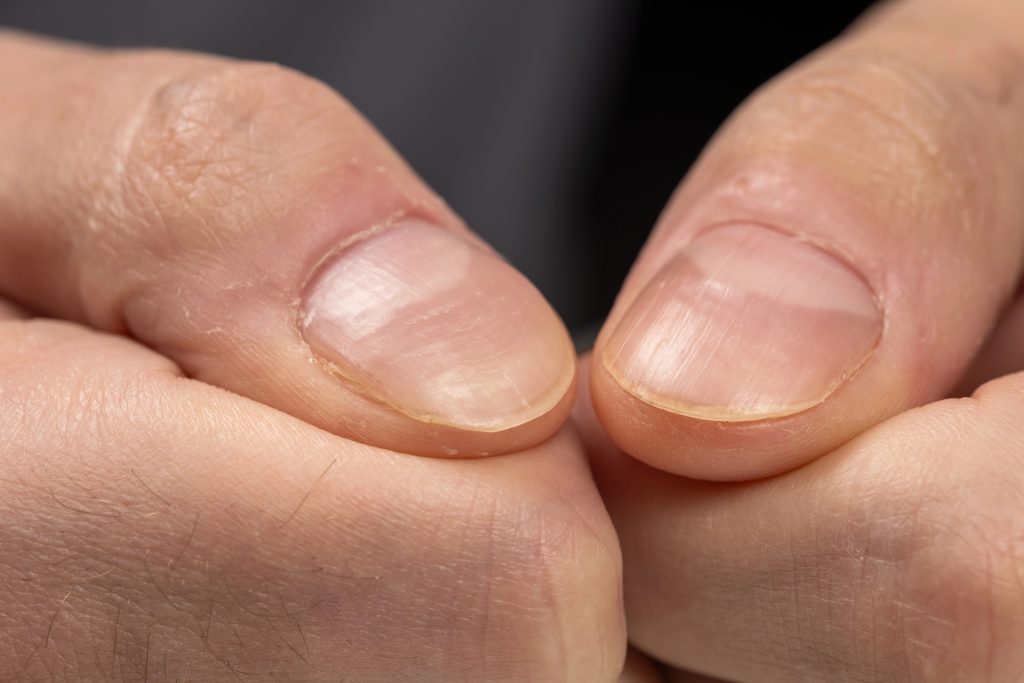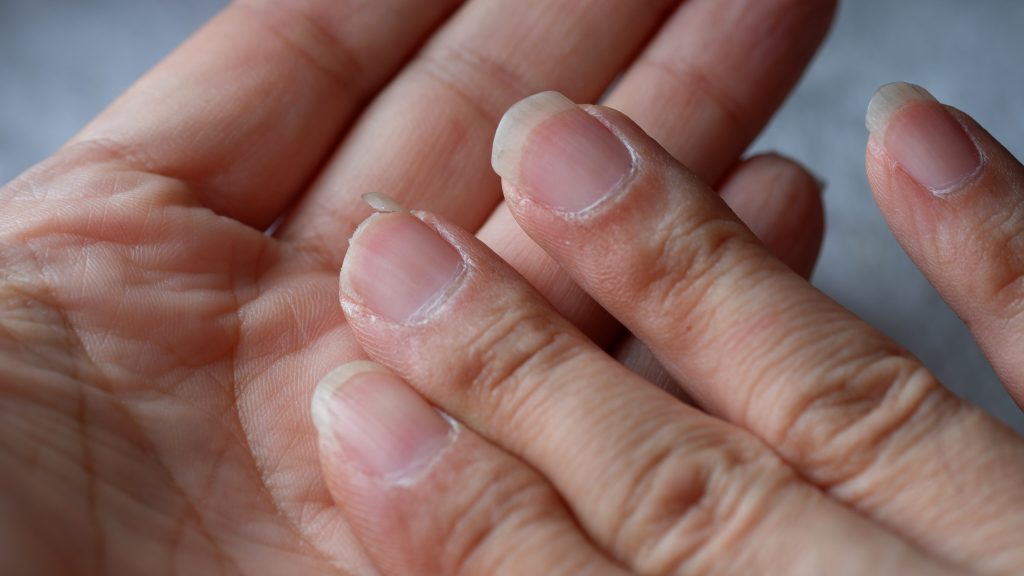
“Your nails are like small health billboards what are yours saying to you?” It’s all too easy to ignore those little white marks on your nails until they jump out at you when you’re scrolling through your phone or mixing your morning coffee. Though they may look like a harmless cosmetic glitch, these white spots leukonychia can actually be a sign of more than you realize about your general health.
From the newest salon looks to sneaky nutritional deficiencies, nail specialists claim that there’s a whole universe of explanations behind those enigmatic white patches. The silver lining? Most are completely fixable with some minor adjustments to your routine. Here’s the in-depth on the most usual (and a few surprising) culprits, along with expert-approved advice for maintaining your nails healthy, silky, and mark-free.

1. Vitamin and Mineral Deficiencies: The Inside-Out Clue
If your nails have white spots, your body may be issuing a quiet SOS regarding your diet. Experts point out that zinc, biotin, or calcium deficiencies are time-honored causes for these white spots. As explained by Dr. Debra Jaliman, board-certified dermatologist, these nutrients are important in the formation of healthy nails. Zinc, for example, is crucial for cell repair and growth, and its deficiency can appear in the form of white spots or even brittle nails. Low levels of selenium, iron, and B vitamins are also known to be linked by research with changes in nails, such as leukonychia, brittle nails, and even spoon-shaped (koilonychia) nails. The solution? A well-balanced diet that includes plenty of leafy greens, lean protein, nuts, and dairy, along with discussing specific supplements with your healthcare provider if necessary. As one article in the International Journal of Dermatology suggests, “almost any nutritional deficiency can produce significant changes in the nail plate.”

2. Nail Salon Habits: When Beauty Routines Backfire
Love a fresh mani? Too much salon time, particularly for gel or acrylic nails, can be damaging. Dermatologists indicate that excessive chemicals and frequent use of acetone-based removers dry out the nail plate, creating white spots and surface roughness. Excessive buffing or filing, and glue from acrylic nails, also hurt the sensitive nail matrix. A report in the American Journal of Clinical Dermatology points out that these changes due to cosmetics are generally harmless but can be annoying for people who opt for a natural appearance. To let your nails breathe, use milder, acetone-free removers, avoid consecutive gel sessions, and speak with your technician about less harsh products. As nail specialist Dr. Asmi Berry suggests, “Limit exposure to harsh chemicals.and choose acetone-free remover when doing your nails.”

3. Daily Damage: The Sneaky Bumps and Bangs
It’s not always obvious that a stubbed toe has anything to do with a mark on your nail particularly because symptoms may not appear until weeks later. Blunt trauma, such as banging your finger in a door or hitting your nails on hard surfaces, may damage the nail matrix and lead to punctate leukonychia those small white spots. Even biting your nails or picking at your cuticles can leave permanent scars. Based on DermNet, these spots are typically limited to a few of your nails and will naturally wear away over several months. The best prevention? Take care of your hands, and if you do have a nail-biting tendency, try stress-reduction exercises or bitter-tasting nail polish to assist you in quitting.

4. Fungal Infections: When Hygiene Matters Most
If your white spots are getting worse, thickening, or are related to changes in the texture of the nail, a mild fungal infection may be the cause. Onychomycosis, also known as nail fungus, usually begins as tiny white dots that can become flaky, thick, or brittle. Fungi infestations are most often found on toenails, but can infect fingernails as well, says Healthline. The fix? Practice good hygiene trim nails, dry them out, and keep them clean, and ensure the salon you visit has sterile equipment. If you think fungus is to blame, visit a dermatologist for a diagnosis and potential prescription antifungal medication. Topical or oral drugs may cure the infection, but don’t expect results overnight nail growth is slow.

5. Systemic Health Disorders: When Nails Are a Warning of More Severe Matters
Most white spots are benign, but occasionally they’re an indication of more severe health issues. Some patterns such as Mees’ lines (transverse white bands) can be associated with heavy metal poisoning, chemotherapy, or systemic diseases like kidney or liver disease. Muehrcke’s lines, which disappear under pressure, are commonly seen with hypoalbuminemia (low plasma protein), whereas “half-and-half nails” could indicate chronic kidney disease. Terry’s nails, in which the majority of the nail plate becomes white with a thin pink band at the tip, are characteristic of cirrhosis but can occur in diabetes or cardiac failure. As Dr. Berry points out, “Nails are often an early warning system for what’s happening inside the body.” If you see all-over, persistent, or painful changes, it’s time to check in with your healthcare provider.

6. Allergic Reactions and Chemical Exposures
Occasionally, the cause of white spots is a straightforward allergic reaction. Nail polish, hardeners, or even hand soap ingredients can create allergic contact dermatitis, causing white patches or peeling. Acrylic and gel nail polish are common culprits, so are some adhesives. If you’ve just changed up your nail care or cleaning routine and notice new marks, think about ditching the offending irritant. Avoiding allergens and caustics is a first-line solution, Healthline advises your nails will appreciate the respite.

7. Hereditary and Rare Disorders
White nails can be inherited in rare instances. Certain genetic diseases such as Bart-Pumphrey syndrome or Darier disease may result in recurring leukonychia, usually from birth or early life. These conditions can also accompany other symptoms such as hearing loss, cysts on the skin, or wart-like lesions. If you have a family background of changes in the nails or develop all-white nails since childhood, diagnosis and management can be assisted with by a dermatologist or genetic counselor.

8. Other Nutritional Deficiencies That Leave Their Mark on Your Nails
Aside from zinc and calcium, other dietary deficiencies can leave their marks on your nails. Saleness or brittleness of the nails or even a spoon-shaped nail may be caused by iron deficiency, while softness, flakiness, or whiteness of the nails is a result of low magnesium or selenium. B vitamins deficiencies particularly B6, B12, and biotin are associated with brittleness or dystrophy of nails, while vitamin C and D deficiencies also come into play. If you think your diet is in short supply, try a nutrition check-up and filling gaps with food first.

9. When to See a Doctor and What to Expect
For most white spots, there is nothing to worry about, but chronic, spreading, or painful changes should be seen. Physicians might prescribe a combination of nail examination, blood tests, or even nail clipping to eliminate infection or systemic problems. The American Academy of Family Physicians states, in fact, “Nail findings may provide important clues to the diagnosis of systemic illness, limit the differential diagnosis, and focus further work-up.” Treatment sooner rather than later translates to solutions faster and reassurance.
White spots on your nails may be a minor detail, but they’re your body’s cue to give you hints about your health and habits. Whether it’s a vitamin adjustment, taking a manicure break, or just a visit with your doctor, a little TLC makes all the difference in keeping your nails and your entire self looking and feeling their best. So the next time you notice those pale specks, keep this in mind: healthy nails are always chic.


